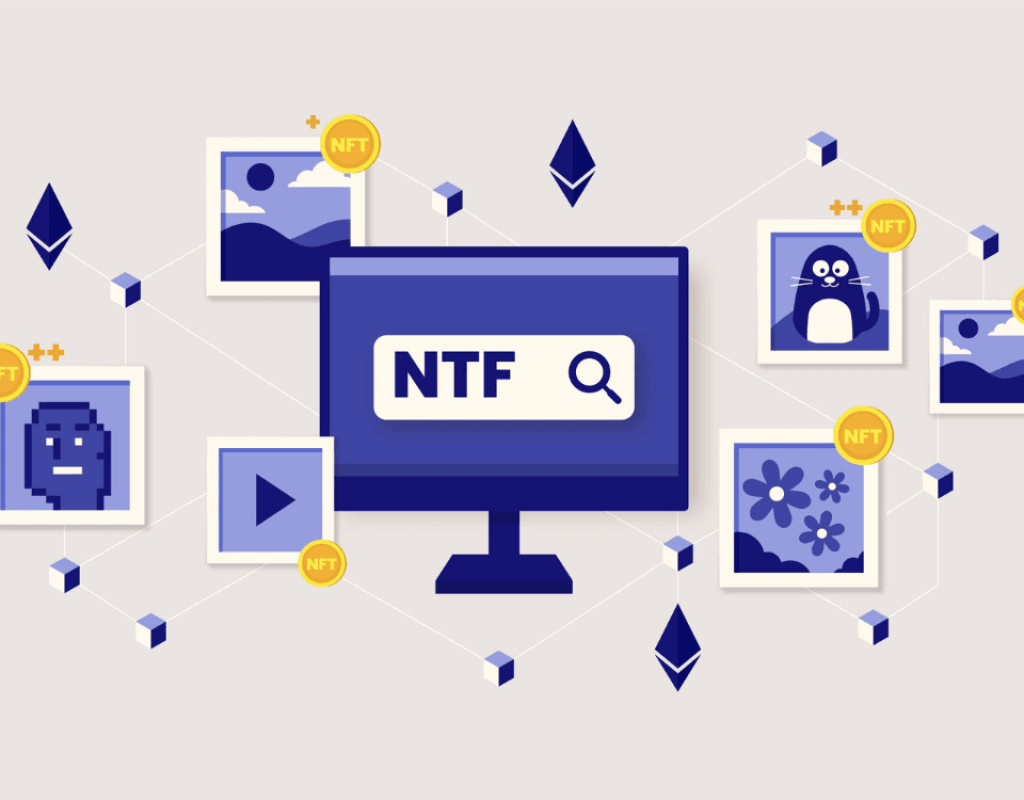
The NFT world is bursting with creativity. Artists, musicians, and brands are rushing to launch collections, hoping to grab attention and sell out drops. But here is the challenge. The NFT market has become one of the most crowded digital spaces in history. OpenSea alone hosts over 80 million NFTs as of 2025, while new collections enter the scene daily. For most creators, getting noticed feels like screaming into a storm.
Many turn to Twitter hype, Discord raids, or influencer shoutouts. These tactics can create a quick spark, but they rarely build sustainable growth. Once the hype fades, so does visibility. That is where SEO for NFT projects comes in. Unlike paid ads or one-off campaigns, SEO builds lasting discoverability. It ensures that when someone searches “buy NFT art,” “new NFT drops,” or even “NFT marketplace reviews,” your project has a real chance of appearing.
Think about it. Search is intent-driven. A person scrolling Twitter might not be ready to buy, but someone typing “best NFT project to invest in” is actively looking. If your collection ranks for that query, you are no longer chasing attention. You are meeting demand at the exact moment it exists.
At CryptoForexSEO, we have seen this firsthand. NFT creators who invest in SEO consistently outperform those who rely only on hype marketing. They enjoy higher visibility, stronger credibility, and more organic sales. In this guide, we will break down how to optimize your NFT project for search engines, boost your chances of being found in Google, and ultimately stand out in a saturated market.
Table of Contents
ToggleThe NFT market has exploded in recent years, yet it is also one of the most competitive and noisy digital landscapes. According to Statista, NFT sales peaked at over $12 billion in Q1 2022, but by late 2023, the hype-driven numbers had cooled dramatically. Despite the dip, the number of active NFT wallets continued to grow, which means demand is shifting from hype speculation toward projects with real substance and trust.
This shift highlights why SEO for NFT projects is essential. It is not about riding a hype wave. It is about creating sustainable discovery paths where serious collectors, investors, and communities can find and evaluate your project.
The NFT world often runs on viral hype cycles. A tweet from a major influencer or a trending Discord pump can create overnight buzz, yet the attention fades almost as quickly. Studies of NFT marketplaces such as OpenSea show that only 10–15% of projects ever resell consistently after the initial mint. Many disappear because they fail to build visibility outside the short-lived hype bubble.
Crypto SEO provides long-term traction because it captures people who are already searching with intent. A user typing “best NFT art collections 2025” or “NFT projects with real-world utility” into Google is far more likely to buy than someone scrolling through Twitter.
Unlike social posts that vanish in hours, a well-optimized article or project page can rank for months or even years. This creates what we call a compound growth loop:
The NFT ecosystem has unfortunately been tainted by scams, rug pulls, and fake collections. Chainalysis reported that over $100 million worth of NFTs were stolen in scams in 2022 alone. This makes credibility a non-negotiable factor for survival.
Here is where SEO becomes more than traffic, it becomes a trust signal. Research shows that organic search results are trusted 70% more than paid ads (Search Engine Journal). If your NFT site consistently ranks high in search results, it subconsciously signals legitimacy to cautious buyers.
Google’s ranking principles—E-E-A-T (Experience, Expertise, Authoritativeness, Trustworthiness)—are particularly relevant to NFT projects:
NFT creators sometimes lean on Twitter promotions, influencer deals, and PPC ads. While these can amplify visibility during a drop, they are expensive and unstable. Ads for crypto and NFT projects are often restricted on Google and Facebook due to regulatory scrutiny, making them unreliable.
SEO, by contrast, is cost-efficient and sustainable. With the right strategy, optimized content, backlinks, and community-driven engagement, you can continue attracting traffic long after your ad budget is gone.
A strong example is NBA Top Shot, which dominated search traffic not only by leveraging partnerships with the NBA but also by optimizing for queries like “NBA NFT highlights”. The result? Sustained interest even outside launch windows.
SEO is not just “one more tactic” in the crowded NFT marketing toolbox. It is the foundation for discoverability and trust. For artists, developers, and platforms, SEO services ensures that your project is not just another name lost in the noise, but a brand that people can find, trust, and buy into.
The NFT space is evolving. Those who rely only on hype will fade. Those who invest in search visibility, authority, and community-driven content will thrive.
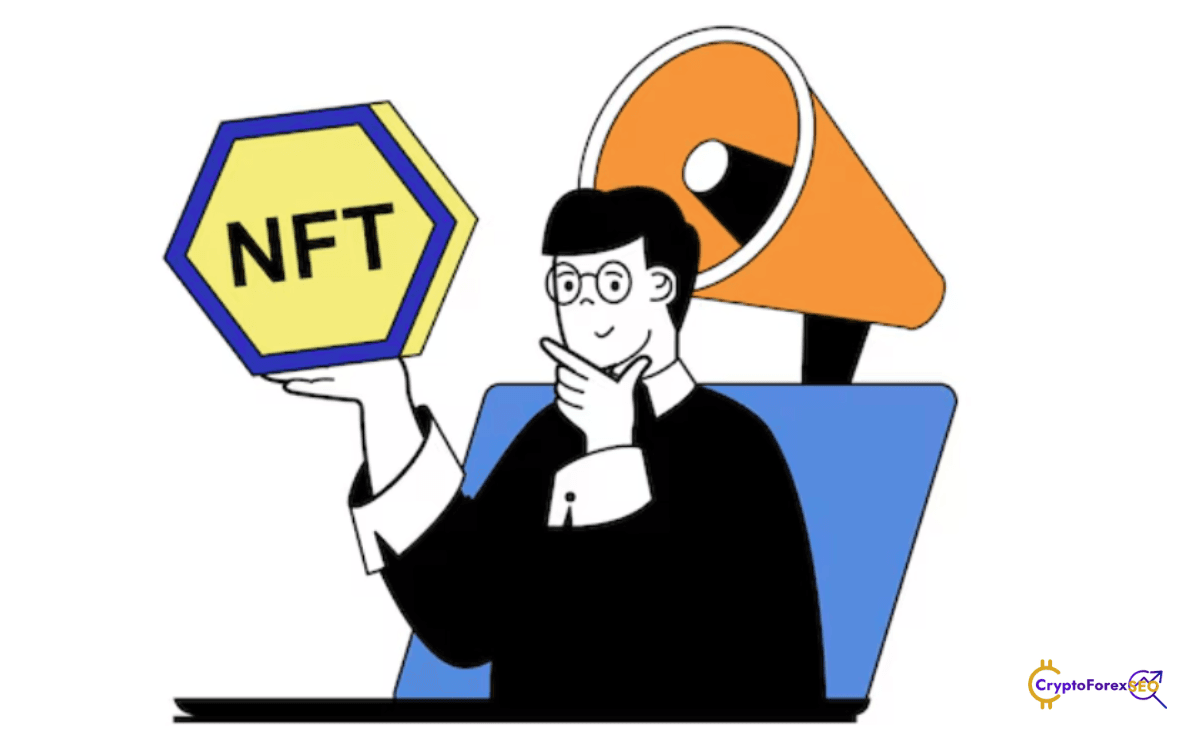
One of the biggest mistakes NFT creators make is assuming that their audience only cares about art drops or minting dates. In reality, NFT buyers are diverse, with different levels of knowledge, motivations, and search behaviors. If you want your NFT project to stand out, you need to align your crypto SEO strategy with how your audience searches and what problems they are trying to solve.
In SEO, we often classify search intent into informational, navigational, and transactional queries. The NFT audience is no different.
A strong crypto SEO strategy for NFTs needs to address all three levels. Ignoring the informational stage means losing trust-building opportunities. Skipping transactional intent means missing actual sales.
Not all NFT buyers are the same. Some are art collectors, some are crypto investors, and others are gamers looking for utility in play-to-earn ecosystems. Understanding these personas is crucial for creating content that matches their intent.
By aligning content with each persona, your NFT marketing project can appeal to multiple audience segments simultaneously.
The NFT market is heavily influenced by trends, drops, and seasons. Search volume spikes around events such as:
Using tools like Google Trends, SEMrush, or even Twitter hashtags, you can anticipate these spikes and publish content in advance. For example, when “AI art NFTs” started trending in 2023, projects that optimized for this query saw massive organic growth.
NFT audiences do not only search on Google. They also use YouTube, TikTok, Reddit, and Discord to explore projects. For example:
An SEO strategy that ignores these alternative platforms misses huge visibility opportunities. Optimizing for multi-channel search intent ensures your project gets discovered across all the platforms your audience uses.
If you are marketing an NFT project, understanding search intent is not optional. It is the backbone of your SEO strategy. By mapping your content to informational, navigational, and transactional searches, targeting buyer personas, anticipating trend-driven queries, and optimizing across multiple platforms, you make your NFT project visible at every stage of the buyer’s journey.
This approach does not just drive clicks. It builds trust, nurtures communities, and leads to sustainable sales growth.
Keyword research is the foundation of NFT SEO. Without it, creators are guessing which words potential buyers and collectors use. The right keywords help you align with search intent, capture high-intent traffic, and position your project where it matters most.
Unlike traditional industries, NFT searches are fast-moving, trend-driven, and niche-specific. This makes keyword research for NFTs both challenging and rewarding.
Short keywords like “NFT” or “buy NFTs” are highly competitive. They are dominated by big players like OpenSea, Rarible, and Binance. Smaller NFT projects will struggle to rank for them.
That is why long-tail keywords are critical. They are more specific, less competitive, and often signal stronger intent. For example:
Long-tail queries often come from users who are closer to making a decision. By targeting these, your NFT project can connect with ready-to-act buyers rather than competing with giants for broad, generic terms.
According to Ahrefs, long-tail keywords make up over 70% of all search traffic because they match specific user queries better than broad terms.
Keyword research should not only rely on SEO tools. Since NFTs are community-driven, you also need to track real conversations and marketplace data.
This is where NFT marketing diverges from traditional SEO. The NFT market evolves quickly, and keyword opportunities often emerge on social platforms before SEO tools catch them.
While marketplaces and communities provide real-world context, SEO tools give you the data you need to prioritize efforts.
According to SEMrush, NFT-related searches peaked at over 5 million monthly queries in 2021, and while volumes have declined in bear markets, search demand for utility-driven NFTs continues to grow.
Not every keyword serves the same purpose. To maximize conversions, map keywords across the buyer journey:
This ensures your project ranks for educational content, comparison searches, and purchase-ready queries, creating multiple touchpoints with your audience.
One danger of publishing lots of NFT content is keyword cannibalization. This happens when multiple pages on your site target the same keyword, forcing Google to choose between them. Instead of boosting visibility, it dilutes rankings.
For example, if you publish three blog posts optimized for “NFT marketplaces,” Google may not know which one to prioritize. To fix this, structure your content:
This way, you cover multiple angles without competing against yourself.
Finally, look at what your competitors rank for. Analyze established NFT projects, marketplaces, and media outlets. See which keywords drive their organic traffic and look for gaps.
For example, if OpenSea dominates “NFT art,” but no one ranks well for “eco-friendly NFT projects,” you can claim that space.
Tools like SimilarWeb and Ahrefs Site Explorer help uncover these gaps and refine your keyword strategy.
Keyword research for NFTs is not about chasing the highest volume keywords. It is about finding long-tail opportunities, tracking community trends, mapping the buyer journey, and building a content structure that avoids cannibalization. Done well, it allows NFT projects to rise above the noise and capture real buyer intent.
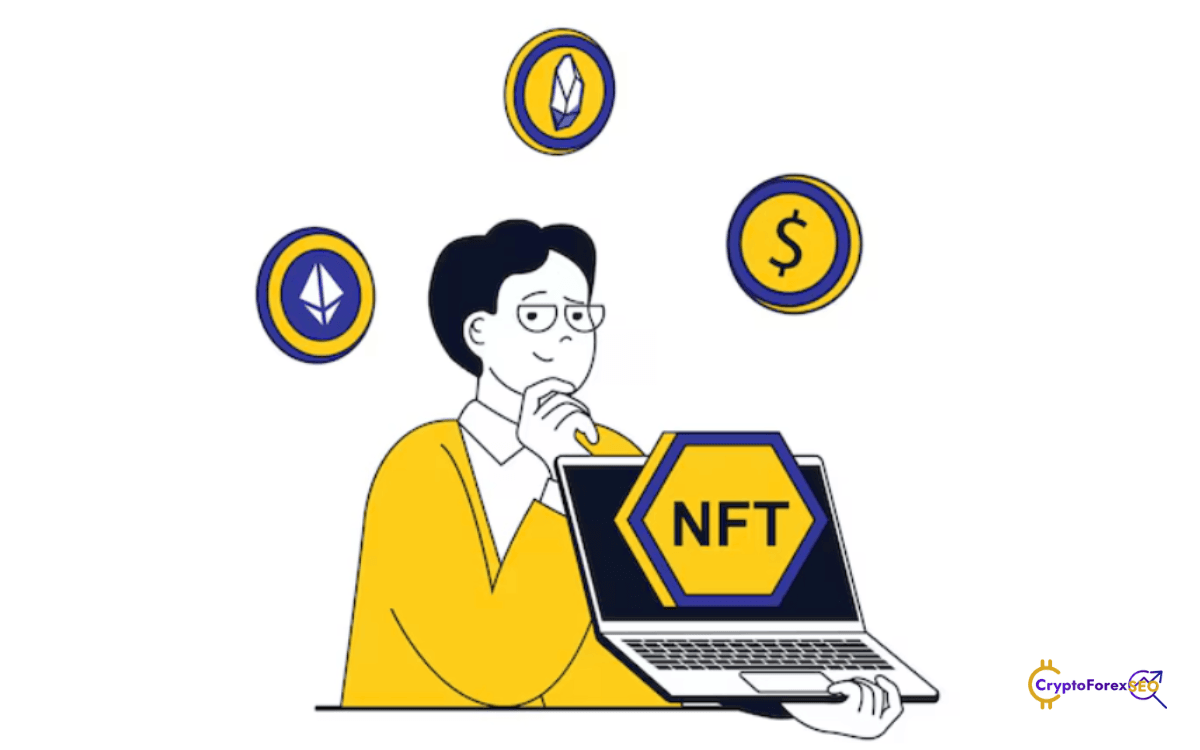
You can have the most exciting NFT collection in the world, but if your website is not optimized for search engines, it will remain hidden. On-page SEO is about making your site discoverable, readable, and trustworthy in the eyes of Google while also providing a smooth experience for users. For NFT marketing, this is even more critical because buyers often research before committing funds.
Metadata is the first impression your NFT project makes in Google search results. Titles and descriptions influence click-through rates and rankings.
Studies show that optimized metadata can improve click-through rates by up to 35% (Moz).
Landing pages are where most users will decide whether to trust and engage with your project. A strong NFT landing page should include:
Adding structured elements like FAQ sections with schema markup also helps capture voice search snippets.
Content on NFT sites must balance SEO optimization with user engagement. Too much jargon can push away beginners, while too little depth can alienate serious investors.
According to HubSpot, websites with blogs generate 55% more visitors and 97% more backlinks, which directly boosts SEO.
Since NFTs are inherently visual, optimizing images and graphics can set your project apart.
Even on the content side, small technical details matter when doing SEO for NFT projets.
Google officially includes Core Web Vitals as ranking signals, meaning a slow NFT site will almost always rank lower.
On-page SEO for NFT projects is about aligning metadata, landing pages, content, visuals, and technical signals to both rank in search engines and convert visitors into buyers. Done well, it creates a seamless bridge between discovery and conversion.
When it comes to NFTs, content is more than just filler for a website. It is the bridge that connects your collection with potential buyers, investors, and communities. In such a fast-changing market, the right content marketing strategy can mean the difference between fading into the background and standing out in Google search results.
Search engines love fresh, relevant, and authoritative content. So do NFT audiences. By combining both, you can build visibility, trust, and organic growth.
Blogging is one of the most powerful strategy for long-term NFT SEO growth. It helps your project rank for both high-volume and long-tail keywords while also giving your audience a reason to keep returning to your site.
Some proven blogging strategies include:
According to DemandMetric, companies with blogs generate 67% more leads monthly than those without one. For NFT projects, that lead could be a Discord member, newsletter subscriber, or direct buyer.
NFTs are highly visual and community-driven, which makes video content an SEO goldmine.
YouTube is the second-largest search engine after Google, and NFT projects not leveraging video content are missing one of the biggest discovery channels.
Here’s where NFT projects can innovate in ways traditional industries cannot. You can make NFTs themselves part of your content strategy:
This strategy doubles as both marketing and community-building while naturally generating SEO-friendly discussions, backlinks, and mentions across forums, blogs, and marketplaces.
Guest posting is not just for traditional SEO. In the NFT space, collaborations with communities and influencers are critical for both backlinks and brand trust.
According to Backlinko, pages with more referring domains rank significantly higher in Google results. Guest collaborations are a proven way to earn those links organically in the NFT ecosystem.
Content marketing for NFTs should not stop at writing a few blogs. It must be a multi-format strategy that blends written guides, artist stories, video explainers, interactive NFT-driven content, and guest collaborations. This holistic approach not only drives rankings but also fosters real community engagement.
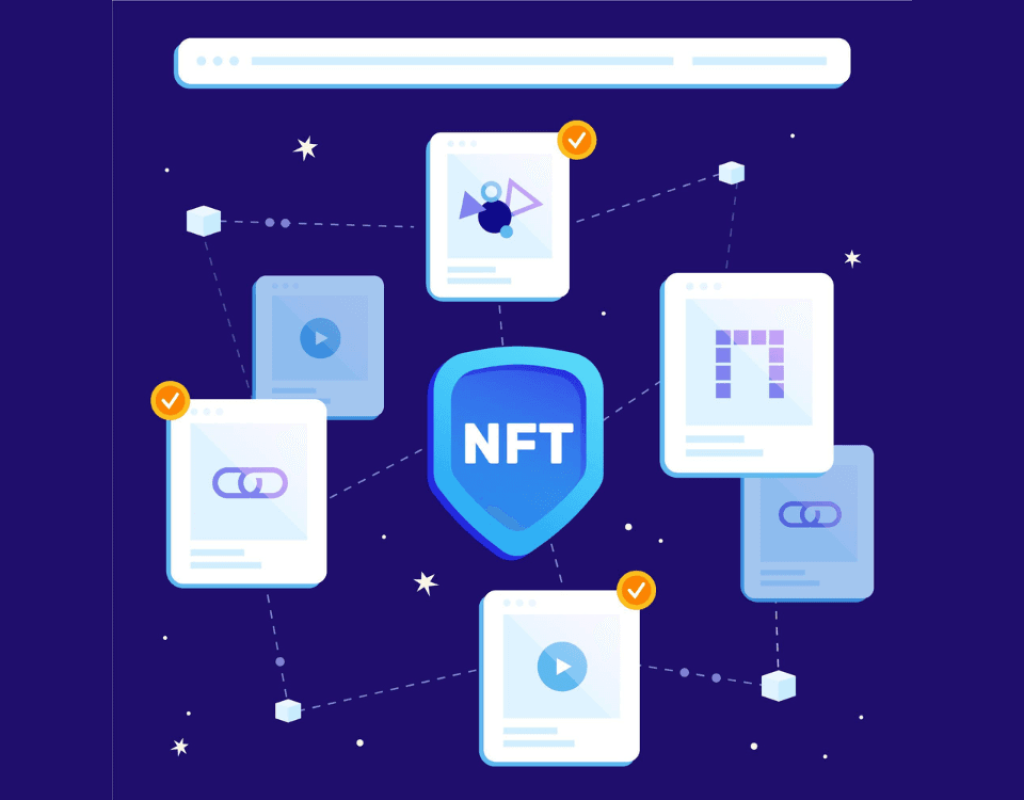
While on-page SEO ensures your NFT website is well-structured, off-page SEO builds the credibility and authority that search engines look for when ranking sites. For NFT projects, where trust is often a barrier for new buyers, off-page strategies like link building, PR, and social proof are just as important as technical optimization.
Backlinks are still one of the strongest ranking factors in Google’s algorithm. For NFT projects, backlinks do more than boost rankings. They serve as trust signals in a market where scams and rug pulls are common.
When authoritative websites such as CoinTelegraph, Decrypt, or NFT Now link to your project, it not only improves SEO but also reassures potential buyers that your project is credible.
A Backlinko study found that the number of referring domains to a site is strongly correlated with higher rankings in Google.
Generic link-building strategies rarely work for NFTs. Instead, focus on crypto and Web3-specific ecosystems:
Each of these links not only improves domain authority but also places your project in front of an audience that is already searching for NFTs.
In the NFT market, community = authority. Search engines are increasingly using social signals as indirect ranking factors, meaning activity on platforms like Twitter, Reddit, and Discord can boost your project’s visibility.
A study by CognitiveSEO found a strong correlation between social signals and higher search rankings, even if they are not direct ranking factors.
Influencer collaboration is not just a hype tactic. When influencers publish content about your NFT project, they create evergreen backlinks.
For example:
Unlike paid ads, which disappear after the budget is spent, these links and mentions stay online, compounding long-term SEO benefits.
One challenge in the NFT space is that spammy backlinks and fake mentions can harm your SEO. Since crypto is often targeted by spammers, regularly auditing your backlinks is crucial.
Tools like Ahrefs, SEMrush, or Google Search Console help you monitor backlink quality. If harmful links appear, you can use Google’s Disavow Tool to prevent penalties.
For NFT projects, off-page SEO is more than just link building. It is about building authority through backlinks, PR coverage, community engagement, and influencer amplification. These strategies not only improve rankings but also build the trust and legitimacy that buyers demand in a crowded NFT market.
Strong content and backlinks can only take you so far. If your NFT website is not technically optimized, search engines will struggle to crawl, index, and rank your content. Since most NFT projects are built on JavaScript-heavy platforms, dynamic galleries, and blockchain integrations, technical SEO becomes even more crucial.
Many NFT platforms rely on dynamically generated content, often pulling metadata directly from the blockchain. While this is great for functionality, it creates problems for Google’s crawlers, which sometimes cannot access JavaScript-rendered pages.
Google through Search Central, has confirmed that server-side rendering can drastically improve indexing for JavaScript-heavy websites.
NFT websites often host thousands of assets, which creates risks of duplicate content and diluted link equity. Proper structuring ensures both users and search engines can navigate collections easily.
A well-structured marketplace improves both crawl efficiency and user experience, which ultimately boosts engagement signals that Google values.
NFT websites often struggle with heavy graphics, 3D models, and animations. Slow load times can hurt both rankings and conversions.
Google has emphasized that Core Web Vitals (LCP, CLS, FID) are ranking signals since 2021 (source). Optimizing NFT sites for speed is non-negotiable.
Search engines need context to understand NFTs. Schema markup helps improve visibility in rich snippets, which can dramatically increase CTR.
Structured data allows NFT projects to appear not only in standard search results but also in Google Images, video carousels, and event listings.
In the crypto and NFT world, security is SEO. A hacked or compromised site will immediately lose trust and rankings.
Technical SEO for NFT websites is not just about speed and crawling. It is about making your collections accessible, secure, and structured for both search engines and users. A well-optimized NFT site builds trust and visibility in a highly competitive market.
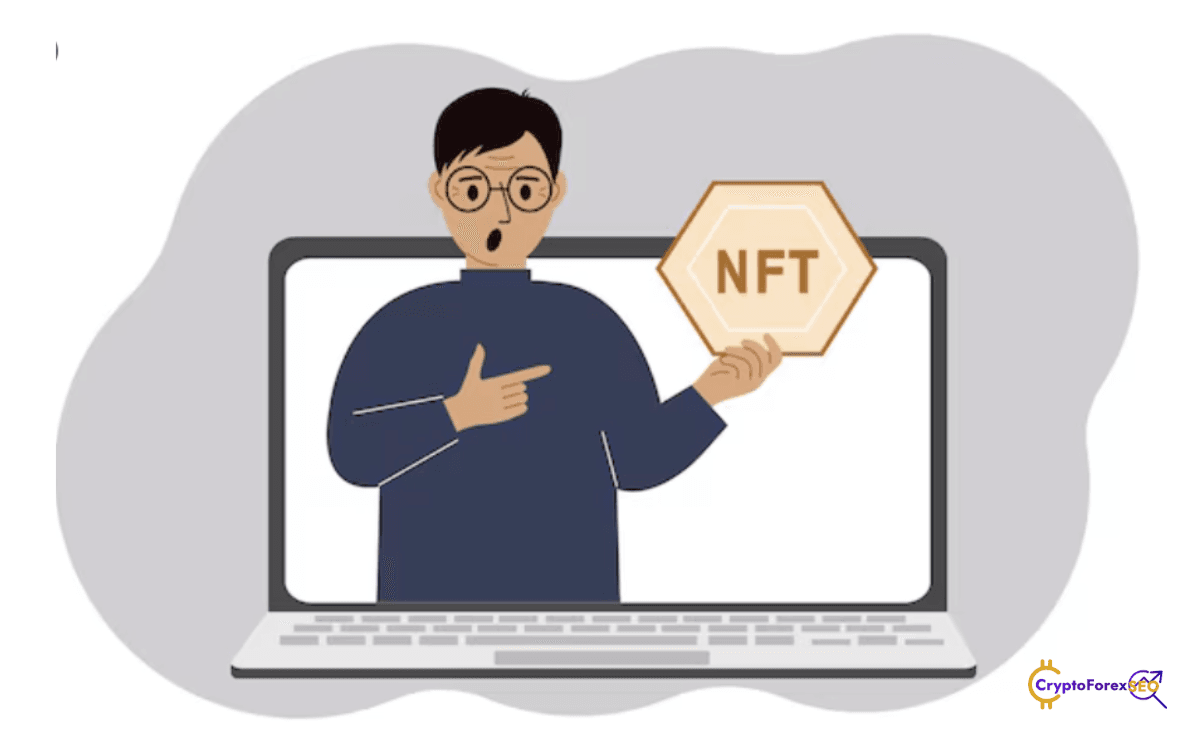
NFTs live and breathe in communities. Unlike traditional products, NFTs gain value not only from their scarcity or utility but also from the collective attention and engagement they attract on social platforms. This makes Social SEO a critical factor in any NFT marketing strategy. While Google does not officially count likes or retweets as ranking signals, the activity they generate fuels backlinks, branded searches, and referral traffic, all of which improve SEO performance.
NFT projects thrive on platforms where conversations happen in real time:
A Sprout Social study found that 68% of consumers decide whether to trust a brand based on social conversations around it. For NFTs, these conversations often define project legitimacy.
While Google has stated that social metrics like likes and retweets are not direct ranking factors, there is strong evidence that they influence SEO indirectly.
Here is how social signals help NFT SEO:
In fact, Moz research shows a correlation between social engagement and higher organic rankings.
In the NFT space, your community is your best marketing team. Encouraging user-generated content (UGC) not only creates social buzz but also produces valuable SEO assets.
According to a Nielsen study, 92% of consumers trust user-generated content more than traditional advertising. In NFTs, where scams are common, UGC can be the deciding factor between a project selling out or being ignored.
For NFT projects, SEO is no longer confined to keywords and backlinks. The real power lies in community-driven visibility across Twitter, Discord, and Reddit. By amplifying social signals and harnessing UGC, NFT creators can build both search authority and trust, two assets that fuel long-term success in this volatile market.
One of the biggest frustrations NFT creators face is knowing whether their marketing is actually paying off. With so many vanity metrics floating around likes, impressions, retweets; it is easy to get distracted. What really matters for NFT SEO is ROI (Return on Investment). Tracking and measuring the right SEO metrics helps you understand if your content and optimization strategies are converting interest into sales, bids, and long-term holders.
Unlike traditional businesses that measure conversions in purchases or subscriptions, NFT projects need tailored KPIs. Here are the core ones:
A HubSpot report found that businesses focusing on SEO see over 1000%+ more traffic than paid social alone. For NFTs, this translates into higher mint participation and resale value.
NFT SEO requires tools that can handle both crypto-specific metrics and general SEO data:
SEO is often undervalued because it is harder to attribute sales directly than ads. However, with the right attribution models, NFT projects can connect SEO efforts to ROI.
According to BrightEdge research, 53% of trackable website traffic comes from organic search. If you are not measuring this for NFTs, you are leaving money and visibility on the table.
Unlike corporate boardrooms, crypto businesses especially NFT projects often report success to holders, DAOs, or communities. Transparent SEO reporting builds trust and positions your project as professional and sustainable. Sharing SEO wins like ranking on page one for “NFT art 2025” or tripling organic traffic can be a powerful community update that reinforces confidence.
Measuring NFT SEO ROI is not just about ranking keywords. It is about proving that SEO directly fuels mint sign-ups, secondary market activity, and long-term project visibility. With the right KPIs, tools, and attribution models, SEO becomes the most transparent and scalable growth engine for NFT projects.
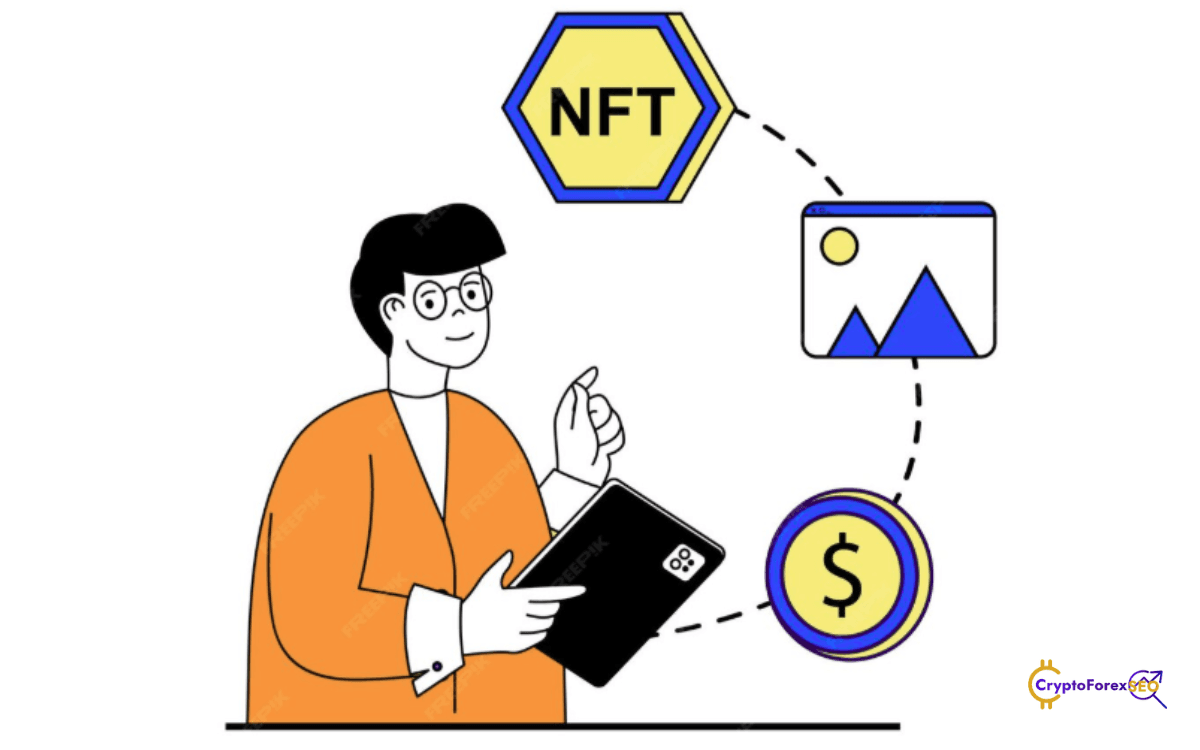
SEO for NFT projects is powerful, but it is not without hurdles. The NFT landscape is fast-moving, competitive, and at times unstable. These challenges make it harder for creators and platforms to gain traction if they are not prepared with the right strategies. Understanding these obstacles helps NFT projects avoid costly mistakes and build resilience in their digital presence.
NFT SEO is a red ocean. Every project, from indie artists to billion-dollar platforms, wants to rank for broad terms like “buy NFTs,” “NFT art,” or “NFT marketplace.” These terms are so competitive that newer projects stand little chance of ranking without serious authority.
According to Ahrefs, over 90% of keywords get fewer than 10 monthly searches, yet these niche searches often convert best.
NFTs fall under the broader “Your Money, Your Life” (YMYL) category in Google’s algorithm. That means crypto and NFT content is subject to stricter scrutiny because it impacts financial decisions.
Google’s Search Quality Evaluator Guidelines stress that YMYL content must demonstrate high authority and trustworthiness to rank well.
The NFT space has been plagued by scams, rug pulls, and fake collections. This makes it harder for genuine projects to stand out, as buyers are increasingly cautious.
A 2022 Chainalysis report showed that NFT-related scams accounted for more than $100 million in stolen assets that year alone. Building trust through SEO is not optional; it is survival.
NFT projects often rely on hype-driven launches with influencer pushes and rapid Twitter engagement. While these strategies can generate massive attention in the short term, they rarely translate into sustainable SEO success.
Research from Content Marketing Institute shows that evergreen content generates 4x more traffic over the long run compared to trending topics.
NFT SEO comes with real challenges, from keyword saturation to algorithm scrutiny and trust issues. But by leaning on long-tail targeting, strong E-E-A-T signals, community trust-building, and evergreen content, projects can rise above the noise and create sustainable visibility in a crowded space.For NFT projects, SEO is no longer confined to keywords and backlinks.
The real power lies in community-driven visibility across Twitter, Discord, and Reddit. By amplifying social signals and harnessing UGC, NFT creators can build both search authority and trust, two assets that fuel long-term success in this volatile market.
The NFT landscape is not static. As blockchain, AI, and search technologies evolve, the way people discover and engage with NFTs will change dramatically. Forward-thinking projects that anticipate these shifts will not only use future-proof SEO strategies but also gain a first-mover advantage in a market that rewards innovation.
Artificial intelligence is already transforming search, and its impact on NFTs will only grow stronger. Search engines like Google are increasingly powered by AI models that interpret user intent, while NFT marketplaces are developing their own AI-driven recommendation engines.
According to Gartner, by 2026, 30% of all searches will be done without a traditional search engine thanks to AI-powered platforms.
Voice search adoption is growing rapidly, especially in regions where mobile is the dominant internet device. NFT-related queries like “How do I buy NFTs on Solana?” or “What is the best NFT marketplace for beginners?” are perfectly suited for voice search.
NFTs are inherently visual, and search engines are advancing in image recognition. Google Lens and Bing Visual Search already allow users to search using images. This trend opens a powerful SEO avenue for NFT projects.
According to Moz, image search makes up 22.6% of all search queries globally. For NFT projects, this is a direct opportunity to capture visual-first discovery.
Centralized search engines like Google may not dominate NFT discoverability forever. Web3-native search engines such as Presearch and decentralized data protocols are emerging as alternatives.
Future Role of DAOs: DAOs may eventually play a role in governing ranking algorithms for decentralized search, giving NFT communities direct influence over what projects get visibility.
As NFTs evolve beyond art into music, gaming, and tokenized experiences, they may themselves become SEO assets. Imagine an NFT that includes embedded metadata optimized for search engines, or NFTs that double as interactive blog posts, tutorials, or brand experiences.
This fusion of Web3 ownership with Web2 discoverability could redefine how NFT projects attract organic traffic.
The future of SEO will be defined by AI-powered search, voice assistants, visual recognition, and decentralized platforms. Projects that adapt early will capture new waves of traffic while others scramble to catch up. SEO will no longer be just about keywords. It will be about anticipating how users search across different technologies and ecosystems.
The NFT industry is one of the fastest-moving digital markets, but with that speed comes intense competition. Thousands of new projects launch every week, yet only a fraction achieve long-term visibility. Hype may give you a temporary spotlight, but SEO is what keeps your project discoverable months and years later.
By investing in strategies like keyword targeting, community-driven content, technical optimization, and social SEO integration, NFT projects can rise above the noise. The key is balancing short-term momentum with a foundation that builds authority, trust, and organic growth over time.
At CryptoForexSEO, we specialize in helping NFT projects and crypto brands dominate search engines, whether that means optimizing your collection pages, scaling your content strategy, or ensuring you appear in front of the right global audience.
Your NFT deserves more than a launch buzz. It deserves visibility, trust, and sales.
Book your free NFT SEO strategy call today with our team at CryptoForexSEO, and let’s turn your project into the one that collectors cannot ignore.

Ray Max
SEO Content Writer
Jeffers Abaga is the founder and CEO of Crypto Forex SEO, an agency dedicated to helping crypto, forex, and blockchain businesses dominate search rankings. With over 5 years of experience in digital marketing, SEO, and business management, he has successfully scaled multiple brands through strategic SEO, content marketing, and conversion optimization.His expertise spans technical SEO, link building, on-page optimization, and brand positioning, making him a trusted voice in the industry. Passionate about data-driven growth, he ensures Crypto Forex SEO delivers high-impact SEO solutions tailored specifically for the crypto and forex space.
Fill the form below to schedule your FREE SEO consultation today!


Your audience is searching for solutions. Let’s make sure they find YOU. Crypto and forex markets don’t wait, and neither do your competitors.
641 Lexington Avenue 14th Floor, New York- USA
+1(212)3658463
The Address 7th Floor
Muthangari Dr, Nairobi- KE
+254 728 115688
© 2025 CryptoForexSEO
All right reserved.